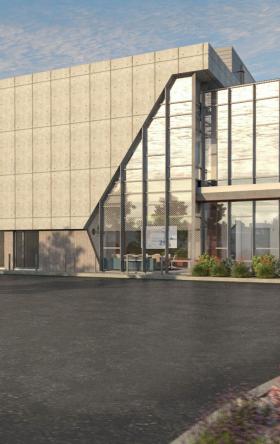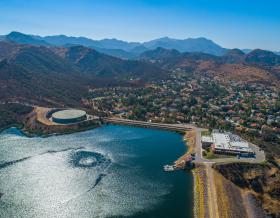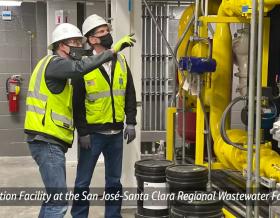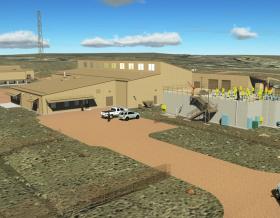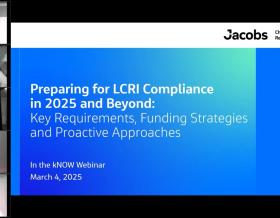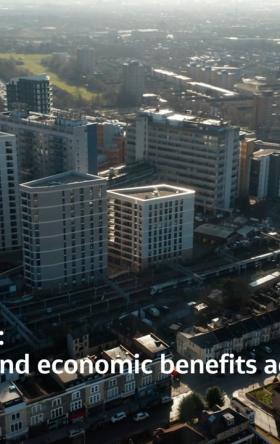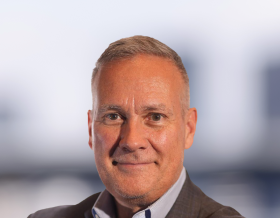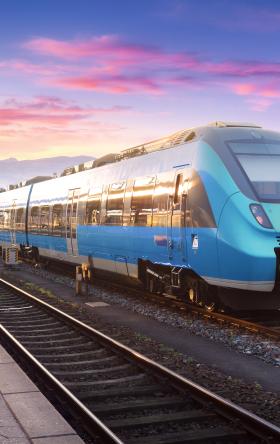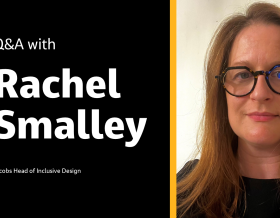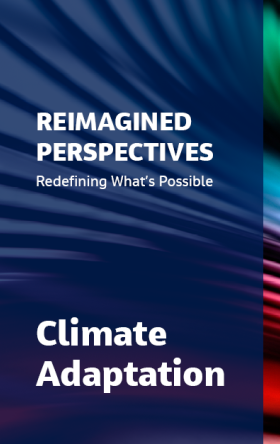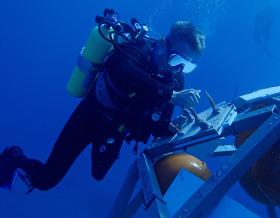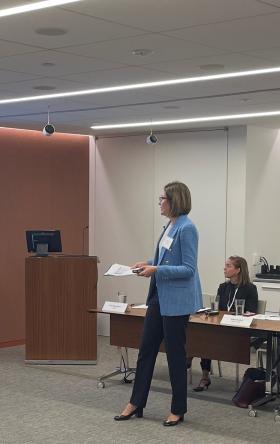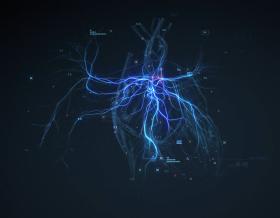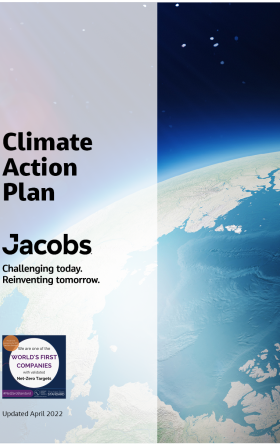Meet Steve Graziano
Milwaukee, Wisconsin, U.S.
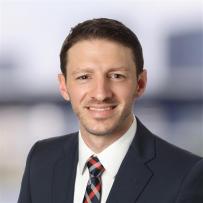
With over 14 years of experience in wastewater engineering and design, Steve Graziano is a rising leader in sustainable water infrastructure. Based in Milwaukee, Wisconsin, Steve’s work spans odor control, biosolids management and the transformation of conventional wastewater processes into more sustainable systems.
Steve’s career began in research and lab work at Marquette University in Milwaukee, where he earned both his bachelor’s and master’s degrees in civil engineering. Since joining Jacobs in 2011, he’s led projects from early planning and feasibility studies to detailed design and construction support — always with a focus on integrating innovative technologies and cross-disciplinary collaboration.
He's played a key role in major regional initiatives, including odor and corrosion control studies for the Oakland-Macomb and Macomb Interceptor Drain systems in Michigan, and plant-wide dispersion strategies at the Stickney Water Reclamation Plant in Chicago, Illinois. His work has helped communities reduce odor complaints, extend asset life and meet increasingly stringent environmental regulations.
Additionally, Steve is often designing and implementing vapor-phase and liquid-phase treatment systems, optimizing phosphorus removal strategies and supporting energy recovery initiatives. He has contributed to projects that address climate resilience, nutrient recovery and greenhouse gas reduction — including the Resource Recovery and Electrical Energy (R2E2) project for NEW Water in Green Bay and the Milwaukee Metropolitan Sewerage District’s Energy Plan.
A licensed professional engineer in Wisconsin and Ohio, Steve is also an active member of the Water Environment Federation, Central States Water Environment Association and a mentor to Marquette University College of Engineering students on infrastructure development projects in rural Guatemala.
Steve’s work is proof that with the right tools and mindset, even the most complex water challenges can become opportunities for innovation.
“Being water-rich doesn’t mean we rest easy, it means we lead boldly. Wisconsin’s legacy in water stewardship is a foundation for future innovation.”
Get to know Steve
-
14 +
years of experience in wastewater engineering
-
10 +
major odor control and sustainability projects led
-
2008
the year he started canoeing Wisconsin’s waterways
What are the most significant shifts you’ve seen in the water and wastewater industry over the past decade, and how are they shaping infrastructure planning and design?
One of the biggest shifts has been the rise of digital solutions in our engineering toolkit. I used to see “sustainability” as aspirational and somewhat vague. But with tools like advanced software, instrumentation, data analytics, machine learning and AI, we now collect, process and visualize data in ways that clarify our sustainability goals and embed them directly into planning and design.
We’ve also started integrating social and economic equity into how we assess community needs. Technical solutions are often the focus, but social impact can be even more complex. In my work on odor management, for example, we now ask: Who might be disproportionately affected? Are there better alternatives or technologies? What partnerships can help us navigate these concerns? These conversations help our projects reflect the values of the communities we serve.
How do you integrate emerging technologies into aging infrastructure while maintaining reliability and compliance?
Every utility operates differently, so there’s rarely a one-size-fits-all solution. That’s where digital tools shine. We can:
- Run multi-variable analyses to predict permit compliance under different scenarios.
- Simulate odor generation and corrosion rates.
- Use predictive operations and maintenance (O&M) models to optimize operations in real time.
- Build dashboards that turn complex data into actionable insights for operators and stakeholders.
With good data, we can test alternatives, predict outcomes and reduce risk with confidence.
The R2E2 Project in Green Bay, Wisconsin, is a great example of applying cutting-edge concepts like energy recovery and nutrient reuse at a local scale. How did your team translate global best practices into a solution tailored for NEW Water’s specific needs?
We started by evaluating over 70 process alternatives. By engaging our technologists early, we aligned NEW Water’s priorities with the best available technologies and assessed lifecycle impacts. The final solution included anaerobic digestion for biogas, co-generation for electricity and heat recovery and fluid-bed incineration, all tailored to meet stricter environmental standards, modernize aging infrastructure and expand capacity.
Q: Another Wisconsin utility, Milwaukee Metropolitan Sewerage District (MMSD) has positioned itself as a national leader with its bold 2035 energy goals. From your experience working on their energy plan, what do you think sets MMSD apart in its approach to sustainability, and what lessons can other utilities take from their planning and implementation strategies?
MMSD’s Energy Plan was a memorable project. While it included proven energy strategies, MMSD also explored bold ideas, like sewer thermal heat recovery, wave-powered hydroelectric generation from Lake Michigan, wind turbines and pyrolysis. Even though many of the 95 alternatives evaluated in the plan weren’t feasible for full-scale implementation, MMSD’s willingness to “think big” and creatively tackle challenges is a model for other utilities.
As one of our key leaders overseeing water and wastewater efforts across the Midwest, how do you see Wisconsin’s role in advancing sustainable water infrastructure, and what unique challenges or opportunities does the region present?
As a lifelong Wisconsinite, water engineer and canoe paddler, I’m routinely reminded of our state’s legacy in water stewardship. Milwaukee, part of “America’s Fresh Coast,” enjoys water abundance — but that doesn’t mean we sit back. It positions us to lead. With strong professional organizations, like the Central States Water Environment Association, American Water Works Association and others that bring the industry together, and a collaborative spirit, Wisconsin is well-equipped to drive innovation in water research and technology.


